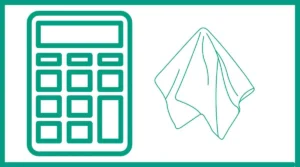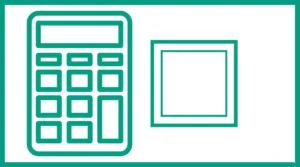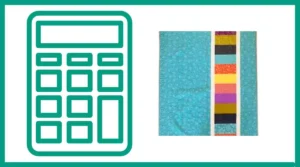Our quilt batting calculator helps quilters determine the exact amount of batting needed for their projects. Batting, also known as wadding, is the insulating layer sandwiched between the quilt top and backing fabric. It provides warmth, loft, and structure to the quilt.
Why Use a Batting Calculator?
Using a batting calculator offers several advantages:
- Accuracy: It eliminates guesswork, ensuring you purchase the correct amount of batting for your project.
- Cost-effectiveness: By calculating the precise yardage needed, you avoid overbuying or underbuying materials.
- Time-saving: The calculator quickly provides results, saving you from manual calculations.
- Versatility: It can accommodate various quilt sizes and batting widths.
How to Use the Quilt Batting Calculator
Using the batting calculator is straightforward. Here’s a step-by-step guide:
- Measure your quilt top’s width and length in inches.
- Determine the width of the batting you plan to use.
- Decide on the desired overage (extra batting that extends beyond the quilt top edges).
- Input these measurements into the calculator.
- Click the “Calculate” button to get your results.
Example 1: Small Lap Quilt
Let’s say you’re making a small lap quilt with the following dimensions:
- Quilt top width: 40 inches
- Quilt top length: 60 inches
- Batting width: 90 inches
- Desired overage: 2 inches on each side
Input these values into the calculator. The results might show:
- Vertical piecing: 1 piece of batting, no seams, approximately 1.78 yards needed
- Horizontal piecing: 1 piece of batting, no seams, approximately 1.22 yards needed
In this case, horizontal piecing would be more efficient, using less batting.
Example 2: Queen-Size Quilt
Now, let’s consider a larger queen-size quilt:
- Quilt top width: 90 inches
- Quilt top length: 108 inches
- Batting width: 108 inches
- Desired overage: 3 inches on each side
After inputting these values, the calculator might show:
- Vertical piecing: 1 piece of batting, no seams, approximately 3.17 yards needed
- Horizontal piecing: 1 piece of batting, no seams, approximately 2.67 yards needed
Again, horizontal piecing proves more efficient for this larger quilt.
Interpreting the Results
The batting calculator provides results for both vertical and horizontal piecing options. Here’s what each result means:
- Number of batting pieces: This indicates how many separate pieces of batting you’ll need to cut.
- Number of seams: If more than one piece is required, this shows how many seams you’ll need to join the pieces.
- Batting yardage: This is the total amount of batting fabric needed, typically given in both inches and yards.
Vertical vs. Horizontal Piecing
The calculator offers two piecing options:
- Vertical piecing: Batting pieces are aligned vertically (parallel to the quilt’s length).
- Horizontal piecing: Batting pieces are aligned horizontally (parallel to the quilt’s width).
Choose the option that requires less yardage to minimize waste and reduce the number of seams.
Tips for Using the Batting Calculator Effectively
- Always double-check your measurements before inputting them into the calculator.
- Consider the batting’s shrinkage factor, especially if you plan to pre-wash it.
- When in doubt, round up to the nearest quarter yard when purchasing batting.
- If your quilt has an unusual shape, calculate based on the largest width and length.
Integrating the Batting Calculator with Other Quilting Tools
The batting calculator is just one of many useful quilting calculators available. Consider using it in conjunction with:
- Backing calculator: Determines the amount of fabric needed for quilt backing.
- Binding calculator: Calculates the yardage required for quilt binding.
- Border calculator: Helps determine the size and amount of fabric needed for quilt borders.
Quilt Batting FAQs
How much overage should I add when calculating batting?
Generally, 2-4 inches of overage on each side is sufficient. For longarm quilting, consult your quilter as they may require more overage.
Can I use the batting calculator for oddly shaped quilts?
For non-rectangular quilts, use the maximum width and length to ensure adequate coverage.
What if my batting comes in a different width than the options provided?
Use the closest width available in the calculator, then adjust your cutting accordingly.
How do I account for batting shrinkage?
Add an extra 2-3% to your calculations if you plan to pre-wash your batting.





